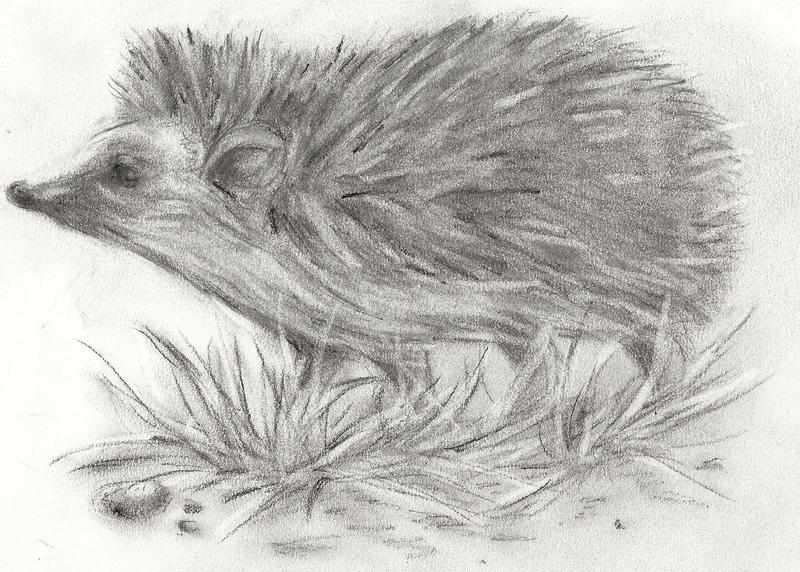 A hedgehog is any of the spiny mammals of the subfamily Erinaceinae, which is in order Erinaceomorpha. There are seventeen speciesof hedgehog in five genera, found through parts of Europe, Asia, Africa and New Zealand (by introduction). There are no hedgehogs native to Australia, and no living species native to the Americas. Hedgehogs share distant ancestry with shrews (family Soricidae), with gymnures possibly being the intermediate link, and have changed little over the last 15 million years. Like many of the first mammals, they have adapted to a nocturnal way of life.[3] Hedgehogs' spiny protection resembles that of the unrelated rodent porcupines and monotreme echidnas.The name hedgehog came into use around the year 1450, derived from the Middle English heyghoge, from heyg, hegge ("hedge"), because it frequents hedgerows, and hoge, hogge ("hog"), from its piglike snout. Other names include urchin, hedgepig and furze-pig. The collective noun for a group of hedgehogs is array or prickle.
A hedgehog is any of the spiny mammals of the subfamily Erinaceinae, which is in order Erinaceomorpha. There are seventeen speciesof hedgehog in five genera, found through parts of Europe, Asia, Africa and New Zealand (by introduction). There are no hedgehogs native to Australia, and no living species native to the Americas. Hedgehogs share distant ancestry with shrews (family Soricidae), with gymnures possibly being the intermediate link, and have changed little over the last 15 million years. Like many of the first mammals, they have adapted to a nocturnal way of life.[3] Hedgehogs' spiny protection resembles that of the unrelated rodent porcupines and monotreme echidnas.The name hedgehog came into use around the year 1450, derived from the Middle English heyghoge, from heyg, hegge ("hedge"), because it frequents hedgerows, and hoge, hogge ("hog"), from its piglike snout. Other names include urchin, hedgepig and furze-pig. The collective noun for a group of hedgehogs is array or prickle. |
| THIS IS A DRAWING OF A HEDGEHOG |
 |
| DID U KNOW THAT BABY HEDGEHOGS HAVE SOFT WHITE RUBBER LIKE SPIKES? |
The hedgehog's back is made up of two large muscles, which control the positioning of its quills. There are about 5,000 to 6,500 quills on the average hedgehog, and these are strong on the outer surface, but filled with air pockets on the inside. The hedgehog uses its quills to protect itself from predators, using muscles which draw their quilled skin to cover their full body, and pulling in the parts of their bodies not covered, such as their head, feet, and belly. This form of defense is the hedgehog's most successful, but is usually their last resort.Hedgehogs are fairly vocal and communicate through a combination of grunts, snuffles and/or squeals, depending on species.Hedgehogs occasionally perform a ritual called anointing. When the animal encounters a new scent, it will lick and bite the source, then form a scented froth in its mouth and paste it on its spines with its tongue. The specific purpose of this ritual is unknown, but some experts believe anointing camouflages the hedgehog with the new scent of the area and provides a possible poison or source of infection to predators poked by their spines. Anointing is sometimes also called anting because of a similar behavior in birds.Similar to opossums, mice and moles, hedgehogs have some natural immunity against snake venom due to the protein erinacin in the animal's muscular system (although it is only available in small amounts, and so a viper bite, for example, may kill the hedgehog anyway).
No comments:
Post a Comment